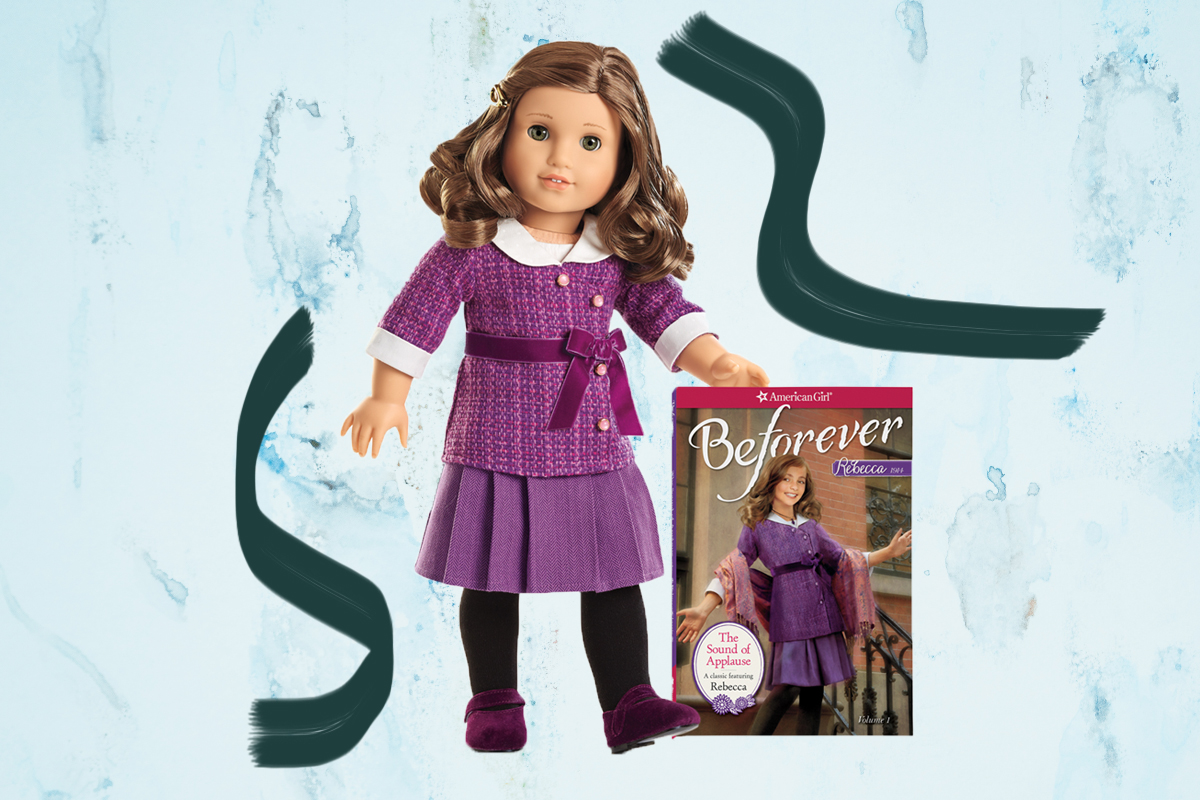If you haven’t listened to The American Girls podcast, you are missing out. Hosted by historians and committed ‘90s kids Mary Mahoney and Allison Horrocks, the podcast revisits the American Girl books with a dose of ‘90s pop culture nostalgia, humor, and a critical eye toward the successes and shortcomings of the books as works of fiction and as educational tools. Recent episodes have included deep dives on everything from representations of grief in Josefina’s books, to Kirsten’s notorious St. Lucia Dress (yes, the one with the candlelit wreath headdress), to Winona Ryder’s underappreciated film, How To Make An American Quilt.
I’ve been avidly listening since it launched in February of this year, and the podcast has completely reignited a passion that I had previously put aside. I thought I had outgrown American Girl dolls years ago, in the same way I had long outgrown Limited Too and Backstreet Boys. I was wrong.
Listening has me thinking about my own dolls I had growing up, and one thing I’m now realizing is the essential role they played in constructing and understanding my own Jewish identity.
Take Lindsey Bergman. Remember her? Unless you were in the market for a doll in 2001, then probably not. But Lindsey was the first in what American Girl brands “Girl of the Year,” a doll available for a limited time with a story based in modern time. Lindsey was also the company’s first foray into a Jewish doll. And she was, most importantly, my big Hanukkah gift in December 2001, when I was 8.
Of course, I had thought about my relationship to Judaism before that fateful Hanukkah. The year prior, I had switched from a Jewish day school to public school in a decidedly not-very-Jewish town, and had thought about what that meant for me, both the good (classroom Valentine’s Day parties!) and the bad (is everyone hanging out at CCD without me?).
But I hadn’t thought about it hard until it came time to “suggest” a doll I “might” want to my parents, and hit a wall: Christmas.
All the historical dolls at the time had Christmas outfits and Christmas tie-in books. And while I knew, in the back of my head, that just because that stuff existed didn’t mean I would ever get them, the idea of getting a doll with a narrative inevitably tied to Christmas just didn’t feel right.
Lindsey, on the other hand, did not have that baggage. Her book centered around mishaps involving a pet parade, her brother’s bar mitzvah, and a rogue matzah ball. Here was a doll I could have and enjoy completely, without feeling the demand to participate in Christmas.
I adored my Lindsey. To this day, I’m baffled by my parent’s willingness to buy me such an extravagant Hanukkah gift. All that being said, she still wasn’t one of American Girl’s historical dolls. She didn’t come with the annual catalogue spread of beautiful, historically accurate accessories. She didn’t have a book series, just a single novel.
Which brings me to Molly.
I never owned a Molly McIntire doll, but I was totally “a Molly.” I had a two-braids-and-glasses phase that lasted into college. And like Molly, I too knew a thing or two about tap dancing, was afraid to put my head under water at summer camp, and was a budding Anglophile.
Most importantly, like Molly, World War II loomed large over my family history. My mom’s father served (like Molly’s father) as an American GI stationed in Europe. On my dad’s side, my safta was a Kindertransport refugee. Like many Jewish kids, the story I knew about World War II in elementary school started and ended with the Nazi persecution of Jews.
And through the Molly books I learned that was not how other people understood WWII. Molly’s books are American Homefront books, and Jewish history does not figure at all in them. Molly never meets a Jewish person in her series. Nazis are bad, sure, but they’re not arresting family members in the dead of night and smashing up synagogues. When Molly’s family takes in Emily, a non-Jewish girl from England, it’s because of German air-raids, not because there’s a chance she’ll be deported to a death camp.
At the time, I couldn’t imagine a WWII story where physical danger was so remote. I could not imagine a reality where a Victory Garden and dance recitals were the stakes, and not the looming threat of mass murder. Molly’s world is changed by the war, to be sure. Even as a kid, though, I could not reconcile something that felt safe in a moment in time I only associated with destruction. I already knew what life for 10-year-old me would have been like in WWII, and it would never look like Molly’s world.
By the time American Girl released its first historical Jewish character, Rebecca Rubin, in 2009, I was in high school and had “outgrown” the dolls. I remember hearing about her, but it wasn’t until the American Girls Podcast that I went back to look at what I had been missing.
Turns, out, I was missing a lot.
Rebecca Rubin is a spunky, aspiring actress and daughter of Jewish immigrants growing up in New York City, circa 1914, on the Lower East Side. Her books are excellent. There’s Passover lunchtime drama on the set of a silent film. Rebecca and her friends are stuck navigating an ignorant teacher who insists Christmas is a national holiday and punishes students who use Yiddish in the classroom. Rebecca attends a labor protest, goes to Coney Island, sings, raises money to sponsor her relative’s immigration to America, takes care of kittens, and eats every conceivable Ashkenazic carbohydrate.
Which is not to say that Rebecca and American Girl aren’t set with their own problems. A recent version of Rebecca’s “Sabbath Set” omits candlesticks (in fact, the only Shabbat-related piece of the set is a loaf of “hallah” bread, no cover). And yes, American Girl Dolls are the elementary-school equivalent of a Birkin Bag, an expensive luxury item that no one actually needs.
But Rebecca Rubin is the very thing that I had wanted as an 8-year-old: The chance to participate fully in the material culture of the American Girl Doll without feeling I was somehow compromising my own set of values and beliefs. A historical doll with a history that was engaging, not alienating. A doll that could foster a positive Jewish identity while being something genuinely exciting to open on the first night of Hanukkah.
Come to think of it, even now, it would still be a pretty exciting gift.
Image by Annie Spratt via Unsplash



